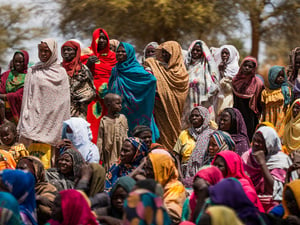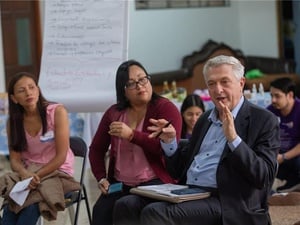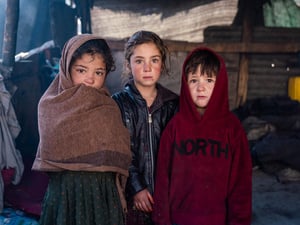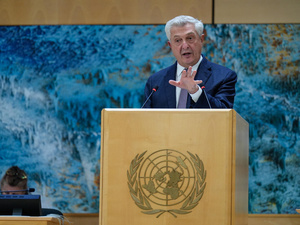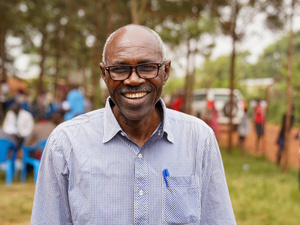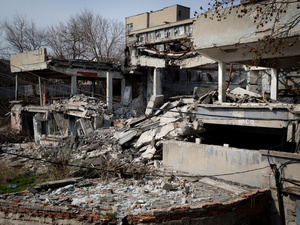Unbroken by a decade of war, Yemen’s Taiz seeks help to rebuild
Unbroken by a decade of war, Yemen’s Taiz seeks help to rebuild

UNHCR’s Sawsan Alashwal (left) and Ingela Andersson from the Swedish International Development Cooperation Agency (right) in Sawsan's home city of Taiz, Yemen.
Perched at an altitude of 1,400 metres, at the point where Yemen’s highlands begin their steep descent to the southwest coast, the historic walled city of Taiz is renowned for its breathtaking views and ornate architecture. For Sawsan Alashwal, 38, who was born and grew up surrounded by family and friends in Yemen’s third-largest city, Taiz has always been simply home.
But the outbreak of Yemen’s ongoing civil conflict in 2015 transformed the city and the lives of its residents. Neighbourhoods became front lines as parties to the conflict battled for control. Infrastructure was shattered. Food and water became scarce. Snipers took up positions in the city’s ancient buildings, with gunfire replacing the familiar sounds of daily life.
For the first three years, Sawsan stayed on even as conditions worsened, working as a child protection officer for the Danish Refugee Council, documenting grave violations against children in the city. She was forced to hide written testimonies on her person as she crossed the checkpoints that had sprung up, navigating sniper fire and walking for hours to speak to families devastated by war.
“I cried for years. What I saw was painful,” she said. In 2018, as the fighting intensified and conditions in the besieged city reached a nadir, Sawsan took the painful decision to flee her home. “I couldn’t sustain life in Taiz anymore. Displacement, war, political divisions – I reached a breaking point.”
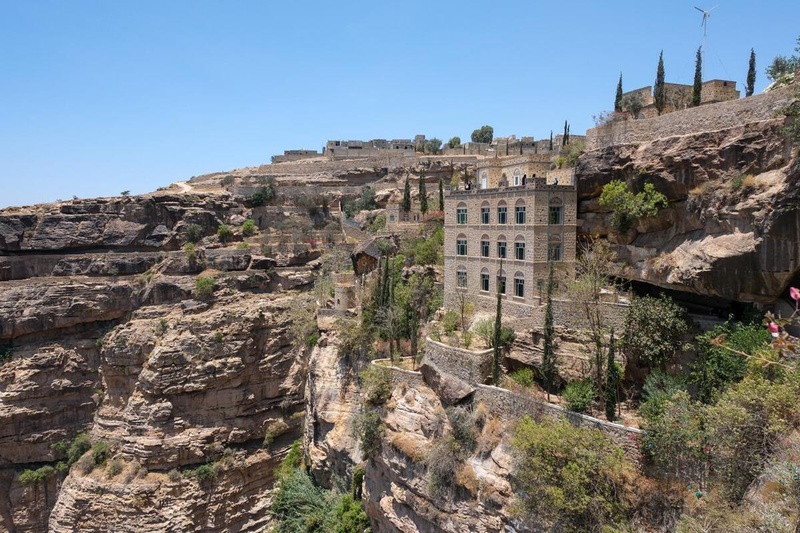
A building perched on a rocky cliff forms part of the dramatic landscape of Taiz.
After more than a decade of conflict and instability, an estimated 4.8 million people remain displaced across Yemen – many of them for years. Another 19.5 million people require humanitarian assistance in a country of roughly 40 million. Taiz has been among the hardest-hit areas, leaving many residents struggling to access utilities, health-care services, education, and documentation.
In late 2018, after moving to the southern port city of Aden, Sawsan began working for UNHCR, the UN Refugee Agency, as a community-based protection associate. But in April, Sawsan returned to Taiz for the first time in nearly seven years as part of a joint visit with the Swedish International Development Cooperation Agency (Sida).
“I couldn’t describe my mixed emotions when I heard,” she said. “The road from Aden – I used to know it like the back of my hand. Those steep, sheer mountains were part of a foggy memory, but nothing looked familiar. Maybe I wanted to forget.”
As the convoy entered the city, her heart began to race. Familiar landmarks were everywhere – the university where she studied, the cancer hospital where she once supported medical teams. But there were unwelcome sights, too. In a neighbourhood long cut off by fighting, Sawsan saw homes reduced to rubble. The image of a children’s broken swing set rusting in the middle of a street became lodged in her mind.
“But people were coming back. That’s what broke me,” she said. The delegation met families helped by UNHCR and its partners with the support of Sida, including those who have returned to their homes from other areas of the city and country.
Through UNHCR’s housing rehabilitation programme, implemented in partnership with Yemeni NGO Nahda Makers Organization (NMO), nearly 1,700 families in Taiz received cash assistance in 2024 to repair damaged homes – providing not only secure shelter but a sense of dignity and a chance to rebuild their lives.
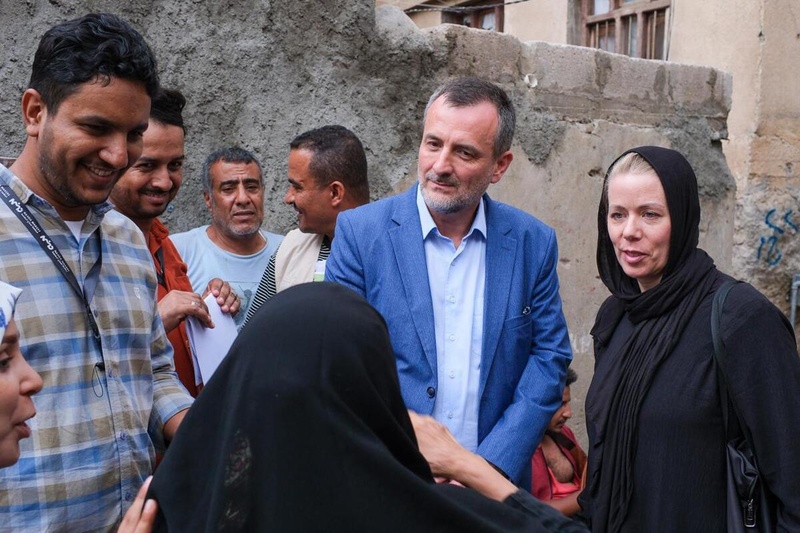
UNHCR’s Deputy Representative in Yemen, Marat Atamuradov (centre), and Sida’s Ingela Andersson (right) speak to a returning resident whose home was repaired with UNHCR’s support.
One of the returnees Sawsan met told her: “You opened the door for us to return. With UNHCR’s support, we had just enough to come back. Whatever you couldn’t cover – we found a way. But without that first step, we would have never made it home.”
But the needs of the population far outweigh the available resources. Funding shortfalls are forcing many humanitarian organizations to scale back their assistance, leaving families without the critical support they need to return home.
Sweden’s support to displaced communities – and to UNHCR’s work – is reflected not only in its flexible and timely funding but also in its direct engagement on the ground. At a time of dwindling humanitarian resources and rising needs, Sweden’s presence, like in the recent visit to Taiz, helps bring attention to the crisis and the vital role of international partnerships and solidarity.
During the visit, Sawsan introduced Sida’s Ingela Andersson to communities working to find a way forward, sharing her conviction that the most powerful solutions come from the residents themselves. “People here know what they need. We just have to support them.”
They visited a civil registration office where a solar power system installed by UNHCR through NMO has doubled capacity, meaning more families can secure identity documents, ensuring access to vital services. They met families coordinating their own home repairs and Yasmine, a volunteer in UNHCR’s community-based protection network, who runs informal classes for children in the ruins of a former school – a shell with no doors, windows or supplies.
“She didn’t want to stop working to talk,” Sawsan said. “But she did. And she told Ms. Andersson everything – what’s needed, what’s missing.”
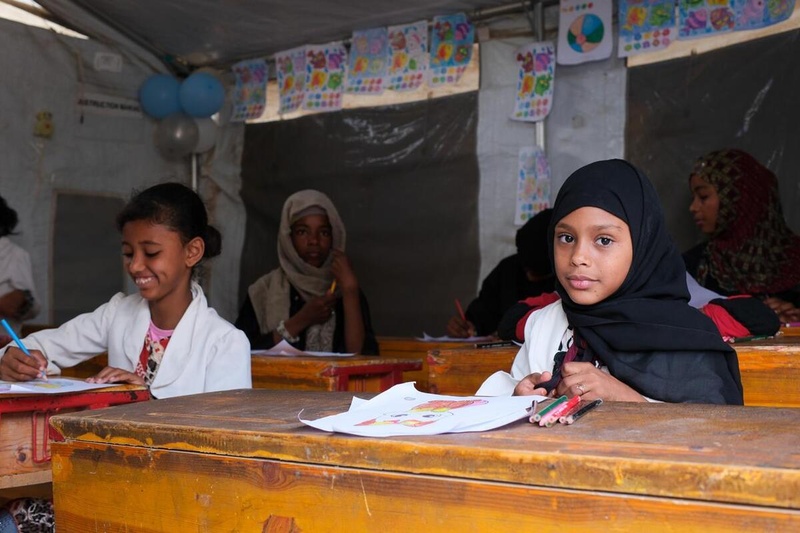
Girls attend classes at an informal school in Al Muharraq site for internally displaced people in Taiz.
Before leaving, Sawsan visited her old family home and met her former university professor. She saw a city still defiantly standing – damaged but unbroken.
“To the people of Taiz, we are proud of you,” she said. “You are still under siege. You still lack services. But you are surviving. You are teaching your children. You are rebuilding. And we see you.” All they need, she added, is “just a little support, and they’ll do the rest.”
“It’s colleagues like Sawsan who embody what protection really means,” said Marat Atamuradov, UNHCR’s Deputy Representative in Yemen. “She carries the knowledge, the pain, and the trust of the people – and channels that into action. This is how we move from listening to real impact.”


